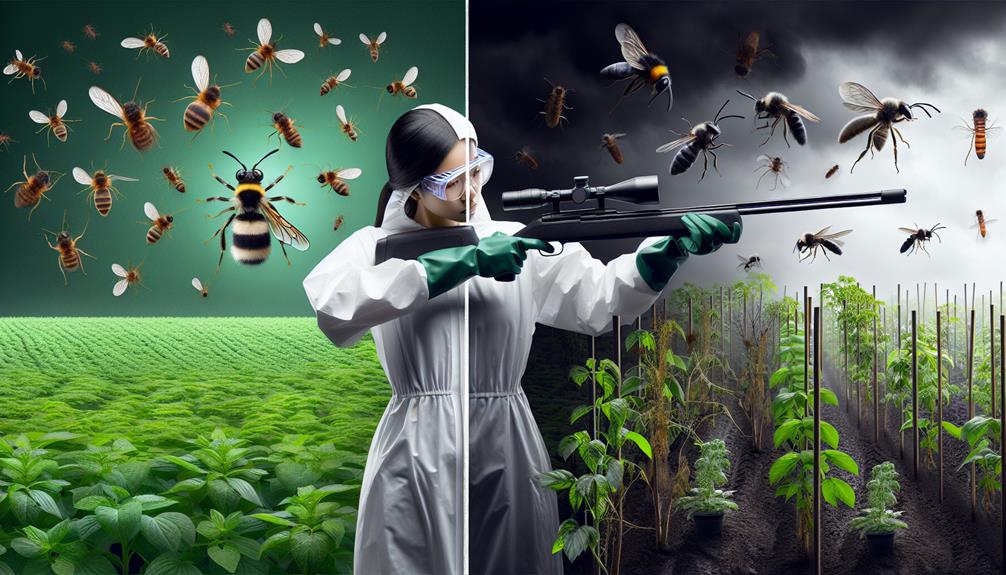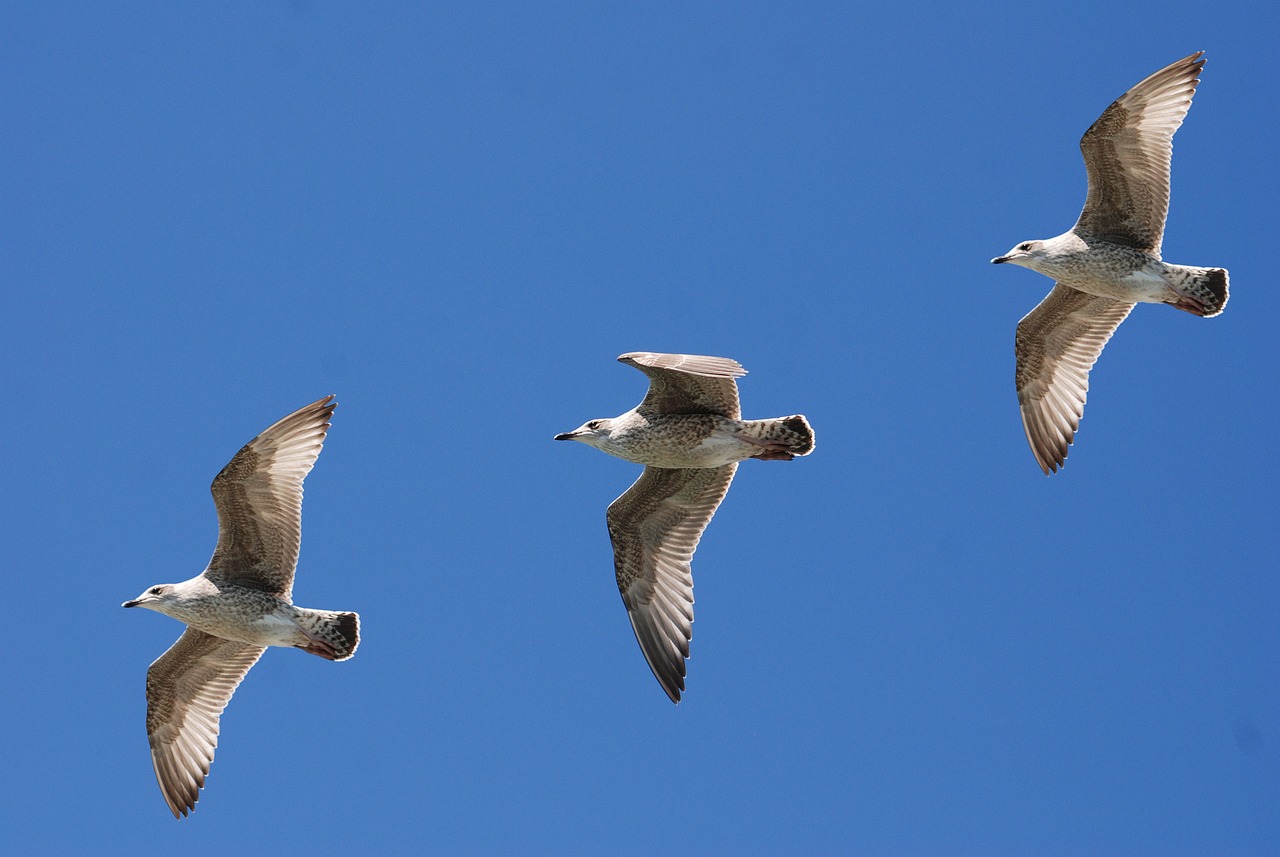Imagine you’re a farm owner grappling with a relentless rabbit population decimating your crops. You’ve tried various methods, but none seem to work until you discover the precision and efficiency of using air rifles for pest control.
As you explore this method, you’ll find that air rifles offer a unique blend of effectiveness and environmental friendliness, striking a balance rarely achieved by traditional pest management strategies. They allow for targeted removal of pests without the collateral damage often associated with poisons or traps.
Moreover, the advancements in air rifle technology have made them safer and more accessible to people seeking a humane and precise way to manage pests.
As we examine the impact of air rifles in pest management, you’ll uncover how this tool addresses immediate pest problems and contributes to broader environmental conservation efforts.
The question now becomes, how can air rifles redefine our approach to pest control in both efficient and sustainable ways?
Key Takeaways
- Pest control methods have evolved, and air rifles offer precision, sustainability, and safety in pest management.
- Air rifles provide significant noise reduction, lower ammunition costs, and minimize the risk of pollution and habitat disruption compared to conventional firearms.
- Air rifles promote natural pest control, safeguard the balance of local ecosystems, and target specific pests without affecting non-target species.
- Integrating air rifles into pest management strategies requires prioritizing safety measures, technical expertise, and compliance with regulations.
The Evolution of Pest Control

Throughout history, pest control methods have evolved significantly, adapting to changes in agricultural practices, urban development, and technological advancements. You’ve likely noticed that as our communities grow and change, so do our strategies to manage pests. Among these, chemical methods and biological controls have stood out for their effectiveness and innovation.
Chemical methods, utilizing pesticides and insecticides, have been refined over the years to target pests with precision while minimizing harm to non-target species and the environment. This approach requires a deep understanding of chemistry, ecology, and pest behaviour, ensuring you’re not just eliminating pests but doing so responsibly.
Conversely, biological controls introduce natural predators or parasites of pests into environments, leveraging nature’s own mechanisms for maintaining balance. This method emphasizes sustainability and environmental harmony, resonating with those of you who prioritize green solutions in pest management.
Both methods underscore the importance of technical expertise and a detail-oriented approach in pest control. As you explore these options, you’re not just choosing a method; you’re aligning with a community committed to advancing pest management while protecting our shared environment.
This journey through the evolution of pest control reflects a collective effort to innovate and adapt, ensuring a harmonious coexistence with the natural world.
Air Rifle Basics
As we explore the realm of pest management further, it’s crucial to understand the role of air rifles, a method combining precision, sustainability, and safety. You’re stepping into a community where skill and knowledge merge to create effective solutions. Let’s delve into the essentials of air rifles, focusing on ammunition types and shooting techniques, ensuring you’re well-equipped for this task.
Air rifles come with a variety of ammunition types, each designed for specific tasks. You’ll encounter pellets in shapes like domed, pointed, and hollow-point, each offering unique benefits for pest control. Domed pellets, for example, are ideal for long-range accuracy, while hollow-point pellets ensure maximum impact on pests, a critical aspect of humane pest management.
Mastering shooting techniques is equally important. A steady hand and a keen eye are just the beginning. You’ll learn to adjust for windage and elevation, skills that demand practice and patience but are rewarding in precision pest control. Remember, your goal is to achieve effective control with minimal harm to the environment.
Advantages of Using Air Rifles

Numerous advantages make air rifles an excellent choice for pest management, offering both precision and environmental safety. As you delve into the realm of pest control, it’s crucial to understand how these tools stand out in promoting a safer and more efficient approach to managing unwanted guests.
One of the foremost benefits you’ll appreciate is the significant noise reduction air rifles provide. Unlike traditional firearms, air rifles operate with much less noise, making them ideal for use in residential areas or close to livestock without causing disturbance. This aspect ensures that you can carry out pest control activities discreetly, maintaining peace and tranquillity in the environment.
Moreover, the ammunition cost associated with air rifles is considerably lower than that of conventional firearms. This cost-efficiency doesn’t just benefit your wallet; it also encourages regular pest management practices. You’re less likely to postpone necessary control measures due to high expenses, ensuring a consistent defence against pests.
Environmental Benefits
In addition to their cost-effectiveness and discretion, air rifles offer substantial environmental advantages by minimizing the risk of pollution and habitat disruption. When you choose air rifles as your pest control method, you’re not only selecting a precise tool but also one that significantly reduces the dependency on chemical pesticides. This choice directly contributes to lesser chemical runoff into water bodies and soil, safeguarding the intricate balance of local ecosystems.
Moreover, air rifles complement biological alternatives in integrated pest management strategies. By targeting specific pests without affecting non-target species, you’re enabling a healthier, more diverse environment. This precision ensures that beneficial organisms, crucial for natural pest control and pollination, thrive. Such an approach aligns with sustainable agriculture and conservation principles, fostering a sense of community and responsibility towards our shared environment.
You, as a part of the evolving pest management community, play a pivotal role in promoting eco-friendly solutions. By incorporating air rifles into your arsenal, you’re not just managing pests effectively; you’re also protecting and nurturing the environment for future generations. This stewardship is essential in creating a sustainable and inclusive world where everyone feels a sense of belonging and responsibility toward ecological preservation.
Targeted Pest Management Techniques

By leveraging air rifles for pest control, you’re employing a method that allows for precise, targeted management of pest populations without the collateral damage associated with broader-spectrum approaches. This technique stands in stark contrast to traditional methods, which often involve widespread chemical use, posing risks not only to non-target species but also leading to increased chemical resistance among pests.
You’re part of a community that values sustainability and efficacy in pest management. Integrating air rifles into your strategy enhances your ability to target specific pests with minimal disturbance to the surrounding environment. This approach complements biological control methods, creating a synergy that effectively manages pest populations while preserving the ecological balance.
Understanding the behaviour and habitat of target pests is crucial. You’ll find that air rifles allow for the application of your knowledge in a manner that’s both precise and considerate of the broader ecosystem. This technique reduces the likelihood of pests developing chemical resistance, a growing concern in many communities.
Safety Considerations
While integrating air rifles into your pest management strategy offers precision and environmental benefits, it’s crucial to prioritize safety measures to mitigate risks to both users and bystanders. To ensure your approach is informed by technical expertise, it’s essential to understand the importance of personal protective equipment (PPE).
Utilizing safety glasses and hearing protection minimizes potential hazards, allowing you to carry out pest control activities with confidence. Moreover, acquainting yourself with the legal implications surrounding the use of air rifles is paramount. Regulations vary significantly by jurisdiction, touching on aspects such as permissible shooting areas, target species, and licensing requirements.
As a member of the pest management community, it’s your responsibility to stay abreast of these laws to ensure your practices aren’t only effective but also legally compliant. This vigilance not only protects you but also reinforces a sense of belonging among peers committed to ethical and responsible pest management.
Embracing these safety considerations with a detail-oriented mindset elevates the professionalism of your work, positioning you as a conscientious and knowledgeable practitioner in the field.
Case Studies

Exploring various case studies reveals the practical implications and outcomes of utilizing air rifles in pest management, offering insights into their effectiveness and safety protocols.
One pivotal study, conducted across agricultural landscapes, demonstrated that air rifles, when used by trained personnel, significantly reduced crop damage by targeting specific pest behaviors without harming non-target species. This precision approach not only minimized environmental impact but also fostered a sense of community among farmers who shared techniques and strategies.
Another case highlighted the use of air rifles in urban settings to control invasive rodent populations. The study underscored the advantages of air rifles as chemical alternatives, reducing the reliance on toxic baits that pose risks to pets and children. Through collaborative efforts with local wildlife experts, pest control professionals developed targeted plans that adapted to the unique behaviours of urban pests, ensuring effective management while preserving public health and safety.
These case studies collectively underscore the value of integrating air rifles into broader pest management strategies. They offer a compelling argument for their role not just as tools for elimination but as part of a sustainable approach that respects ecological balances, prioritizes human and animal safety, and strengthens community bonds by sharing knowledge and resources.
Future Directions in Pest Control
Advancements in technology and research are paving the way for innovative strategies in pest control, focusing on sustainability and minimal environmental impact. As you delve into the realm of precision pest management, it’s clear that the future lies in harnessing genetic solutions and biological deterrents.
These methodologies not only promise to target pests with unprecedented accuracy but also minimize collateral damage to non-target species and ecosystems.
Genetic solutions involve manipulating the DNA of pests, rendering them less viable or attractive to mates, thus controlling their populations without resorting to chemical pesticides. You’re part of a community moving towards a future where pest control is as precise as editing a document, with every change deliberate and considered.
Biological deterrents, on the other hand, leverage nature’s own mechanisms, such as introducing natural predators or pheromones to disrupt pest mating patterns. This approach embodies the principle of working with nature, rather than against it, fostering a sense of belonging among those of you who advocate for ecological harmony.
Together, these strategies represent the forefront of pest management technology. They offer you a glimpse into a future where pest control isn’t only more effective but also aligns with the broader goal of environmental stewardship.
You may also enjoy reading this article
Was This Article Helpful?
- Please provide feedback and comments to help us improve our content.
- Share your experiences and any additional tips you have for dealing with pests.
Share this Post



